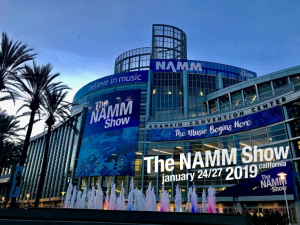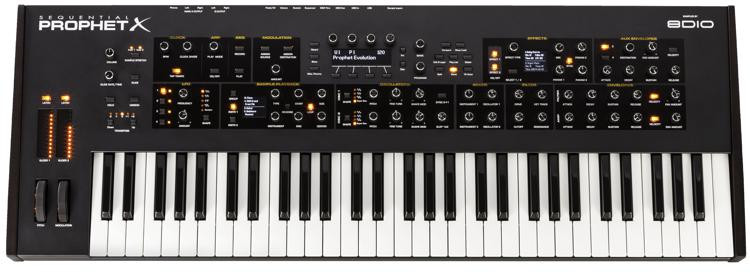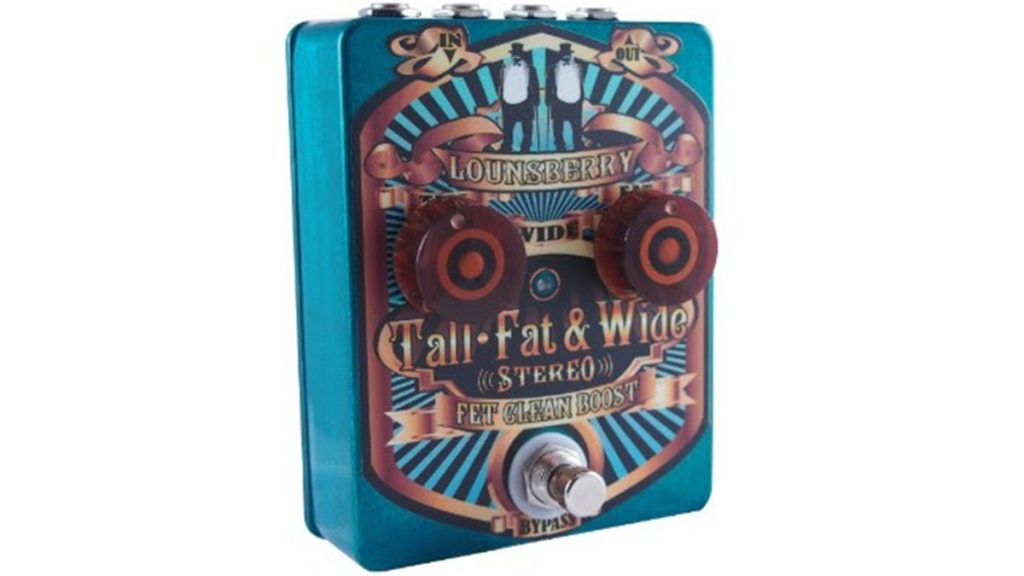

Sequential Prophet X

Radial KL-8
The KL-8, like the Key Largo, is a mixer / DI specifically designed for the needs of keyboardists. Four stereo inputs each with ON/OFF buttons and CUE buttons for silent monitoring (“Is this the right patch? Oh, yep… whew!”), balanced monitor outputs with ground lift, balanced isolated main outputs with ground lift, stereo auxiliary inputs and outputs, dual headphone outputs, signal indicator LEDs per channel, and you can link multiple KL-8 units together for more inputs. Oh and it acts as an audio interface to your computer / laptop with two separate USB connections for redundancy. MIDI in and out on standard DIN connections, footswitch remote capability for switching channels, etc. etc. The list just goes on. And all housed in a 1RU metal enclosure built like a tank, with robust, high quality jacks, switches, and knobs, which is the Radial way.
My only negative with the KL-8 is that they didn’t add a panning knob and a mono switch to the input channels. But the main and monitor outputs can be set to mono independently of each other, which is handy.
2) STG Soundlabs Radiophonic One modular synth. For those that prefer their analog synthesis real, monophonic, and in modular form, the synthesizer iconoclast Suit & Tie Guy has introduced his first oscillator module, called the .VCO, which forms the basis of the new Radiophonic One package. The oscillator’s features are the kind of features one expects when an instrument is designed not by an electronics engineer but by a musician. For example, the oscillator range knob has twice the throw around the root, fifth, and octave than the other intervals, because those intervals are the most used when building patches. Smart. Other features include a range knob with a wide function, allowing you to sweep through the entire range of the oscillator with the detune knob, and a drift knob, which the website describes as “drunken walk, or perhaps a random wobbulator”, affecting the pitch of the oscillator in random ways.

With the addition of the .VCO oscillator, STG Soundlabs has the modules to offer a fully functional synthesizer, which is what they’ve done with the Radiophonic One. High quality boutique analog goodness is now in a bite-sized package with all the necessary ingredients present to cook up your own sound recipes. I spent several booth visits with both Suit & Tie Guy and his partner as they demonstrated the features of the Radiophonic One and the range and variety of textures and sounds you can coax out of the synth is awe-inspiring. It’s the perfect synth for those wanting to get into real analog synthesis or the veteran looking for something new and inspiring.
1) Hammond Leslie 142 re-issue. This was a total surprise to almost everyone at the Hammond booth but what a welcome surprise it was! Hammond Japan brought the prototype for a new Leslie to the NAMM show and it made a huge splash among the Hammond Artists like myself. The specifics are still a mystery, such as price, availability, etc. because the prototype was in a very early stage. But what we do know is that it is the same cabinet size as the vintage 142 and it has a newly designed tube amplifier centered around a pair of 6550 power tubes as well as a 12AU7 and a 12BH7 compliment for the preamp section. The motor control is from the 3300 series, so it has STOP / CHORALE / TREMOLO speeds via the 11pin Leslie connector. The horn itself is an alnico driver and there are some other secrets in there that I cannot divulge. But let me just say that the tone is gorgeously vintage.
As a prototype, there’s no information on the Hammond website. But here’s a quick video I did at NAMM, playing the Hammond XK5 through the Leslie.
HONORABLE MENTION – Lounsberry Tall Fat & Wide. I had to include this pedal on the list because even though I’ve had one since October of 2018 and it isn’t really new to me, the more I mess with it, the more I love it. And Lounsberry had a really cool booth this year right next to the Mellotron Booth and some of the small, independent analog synth makers.

This isn’t just a pedal for organ, folks. Using it on analog synths is revelatory. Even better, using it to ‘warm up’ digital synths is transcendent. I’ll be making more videos soon detailing these uses but in the meantime, check it out on a Moog Voyager. The Voyager doesn’t have a built-in overdrive circuit, as many analog synths these days do. Instead, users often take the headphone output and route it into the filter input jack, and that can be a really cool sound (the lead on Game of Ouroborus from my progressive rock project THEO’s album of the same name is a result of that technique). But oftentimes the overdrive from that method is unwieldy and exaggerated in terms of the frequency response. The Tall Fat & Wide, by contrast, is much more even across the spectrum and the range of saturation you can coax out of it is far greater.
Beyond all the gear, the best part of NAMM is seeing re-connecting with friends. I’m looking forward to next year and more good times!

Hello Mr Jim , i like very much the way you transform and play those songs , i play the piano and organ and love the hammond sound but there is still a question without response for me your left hand and pedal playing is wonderful how you combine them for different styles of music is your left hand following the foot pedal movement with some syncopations ? do you play with a different sound left and pedal? thanks for the music you bring and the chance that you can share it over the world. sorry for my english this mail is from Belgium here we speak french and flemish 🙂
Hi Friedrich,
I’m sorry it’s taken me so long to reply. I love Beligum, I’ve been there many times.
I approach the pedals in three different ways depending on the song. The first is to just tap them very staccato, to add an attack on the front of the note. Then the left hand plays the sustained note. This is the “Jimmy Smith” style.
The second is to treat the bass pedals like the lowest string on a bass guitar. So often I’m playing the pedal note on the downbeat.
And the third is playing all pedals and playing chord with my left hand. I don’t do this often but sometimes it is necessary.
I hope that helps.